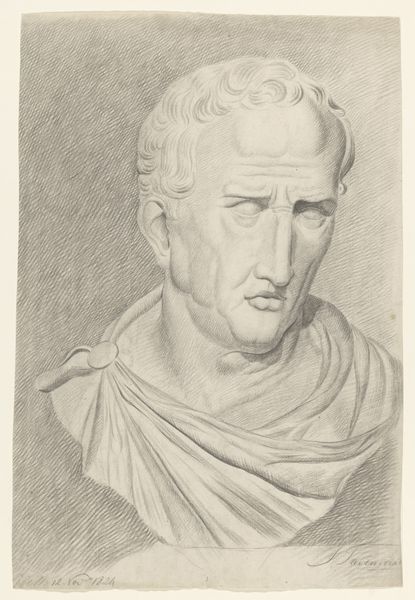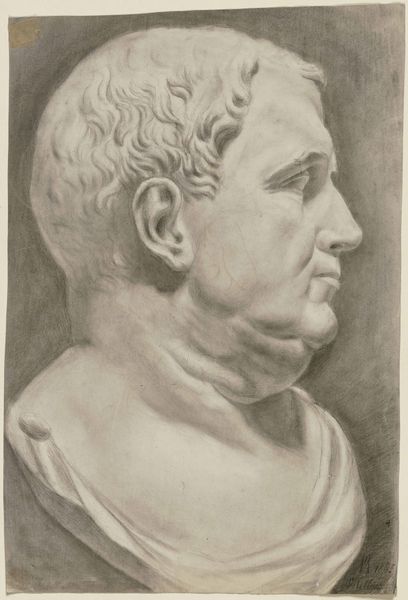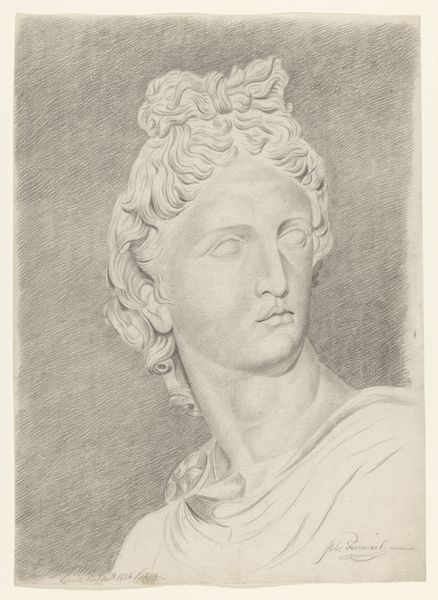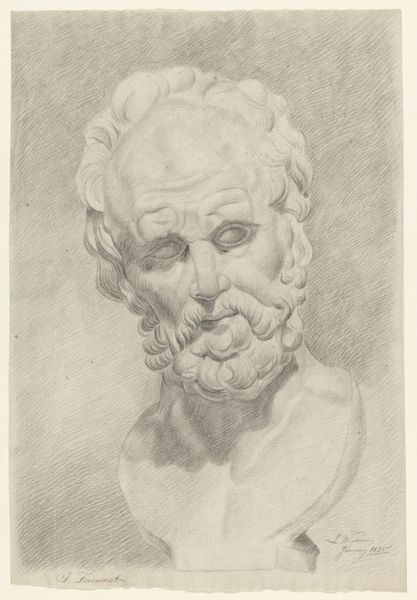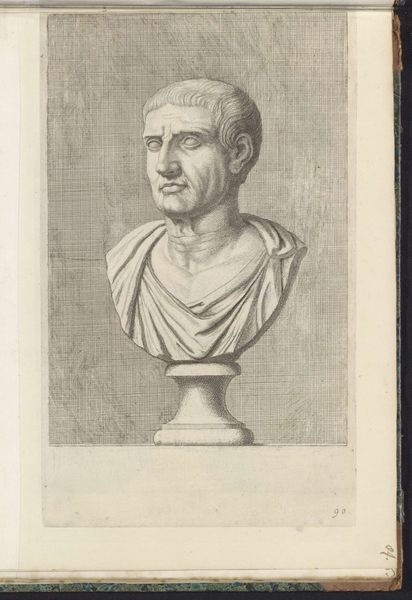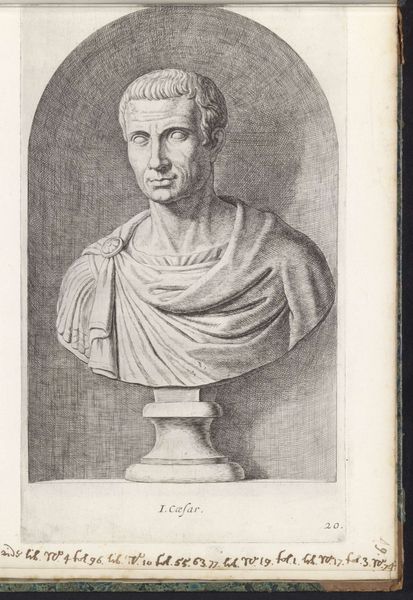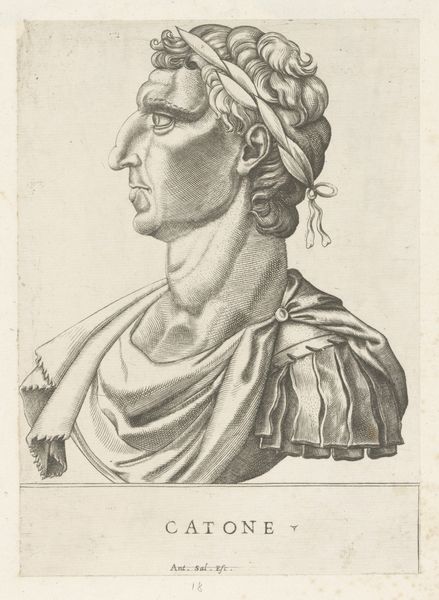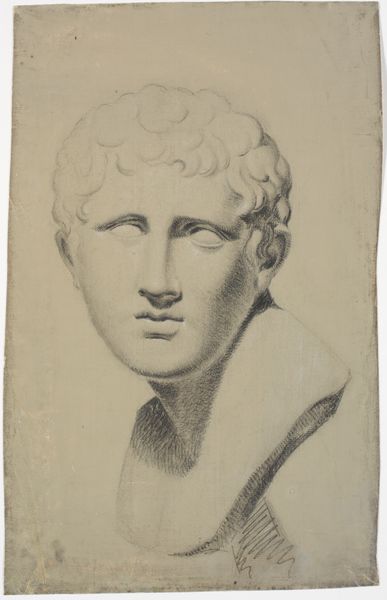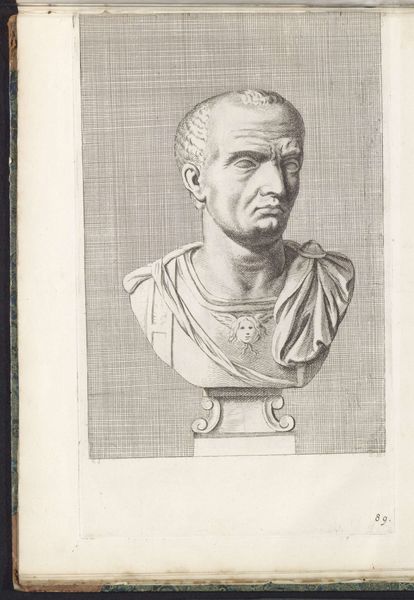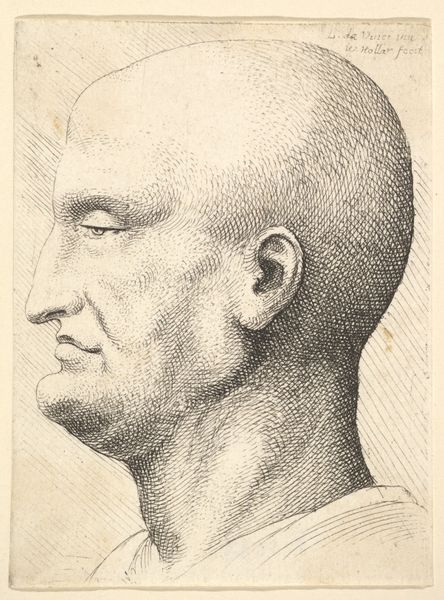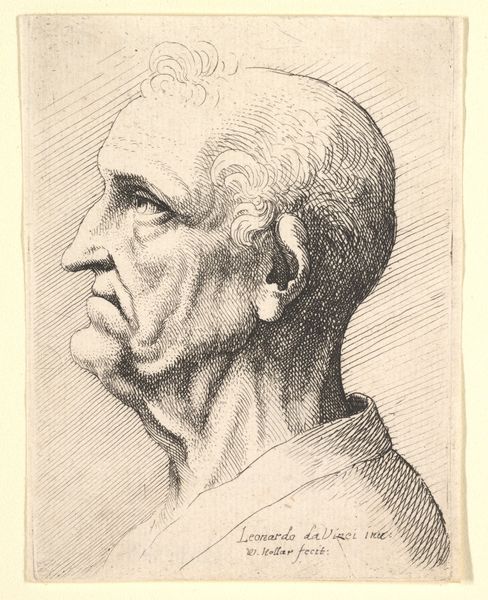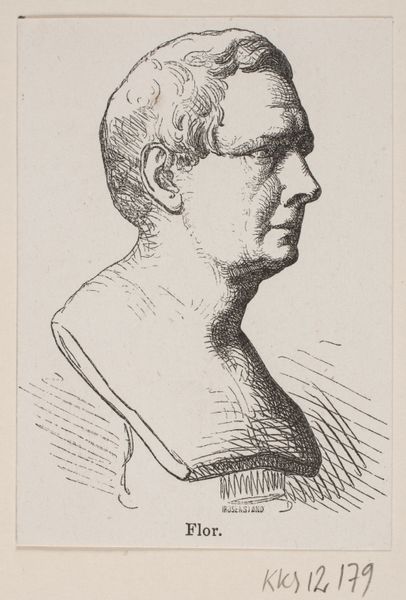
drawing, pencil, graphite
#
portrait
#
drawing
#
neoclacissism
#
classical-realism
#
pencil drawing
#
ancient-mediterranean
#
pencil
#
graphite
#
portrait drawing
Dimensions: height 470 mm, width 328 mm
Copyright: Rijks Museum: Open Domain
Editor: Here we have "Plaster cast of an antique bust of a man" by Johannes Tavenraat, likely from 1826, rendered in pencil. The starkness and simplicity of the medium really emphasize the subject's stern expression, what do you see? Curator: Initially, observe the controlled gradations achieved solely through graphite. The artist coaxes volume and dimension from essentially a monochromatic palette. Note, if you will, the consistent directionality of the strokes that compose the background—a deliberate choice yielding texture, yet remaining subservient to the foregrounded bust. Editor: So, the drawing technique itself is integral to how we perceive the subject? Curator: Precisely. Consider the relationship between the medium’s inherent limitations—its lack of color, its reliance on linear articulation—and the success in capturing a sense of classical sculpture. How does Tavenraat achieve depth with just a pencil? Look closely at the subtle darkening under the chin, the delicate hatching on the cheekbones. Editor: I see it now! The strategic use of light and shadow defines the planes of the face, mimicking the way light would play across the actual sculpture. It's like the pencil *is* the chisel. Curator: Indeed. And observe the eyes; they're blank, typical of a plaster cast. Does this lack affect the expressiveness, or does it intensify the overall effect of serene stoicism? Editor: I think the absence of pupils heightens the feeling of timelessness. It pushes the artwork beyond being just a portrait of a specific individual. Curator: A keen observation! The interplay between representation and abstraction here contributes significantly to the work’s formal power. The piece makes you consider representation over reality in an unusual fashion, something to always bear in mind when examining neoclassical artwork such as this. Editor: Thank you! I've gained an entirely new way to consider pencil drawings and sculpture from your explanation.
Comments
No comments
Be the first to comment and join the conversation on the ultimate creative platform.
